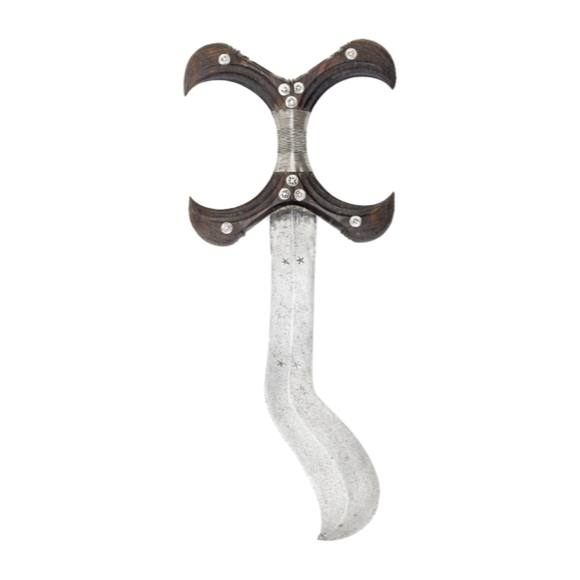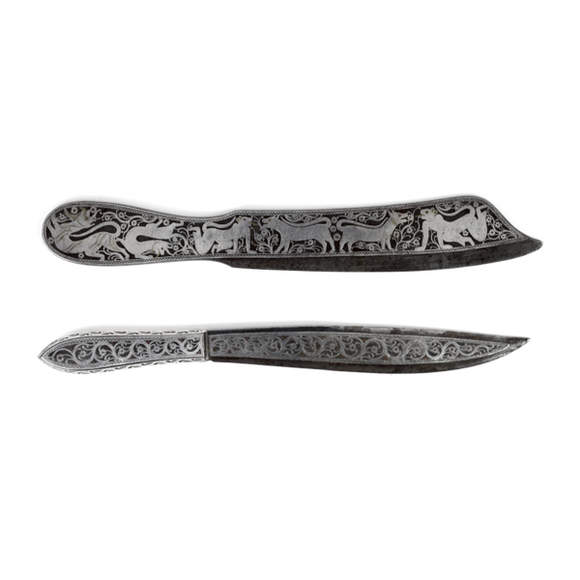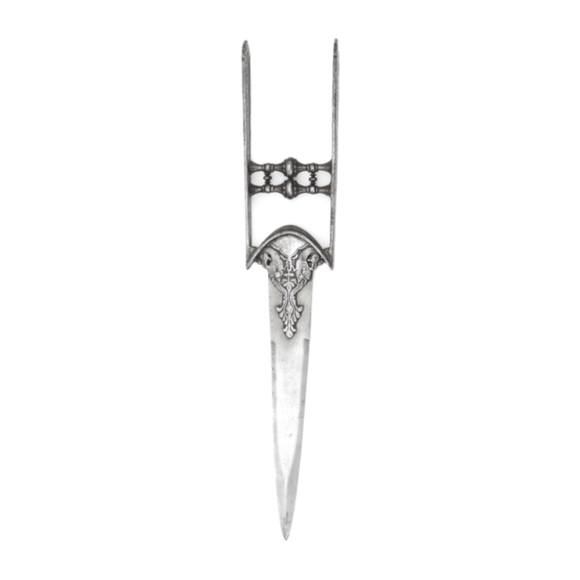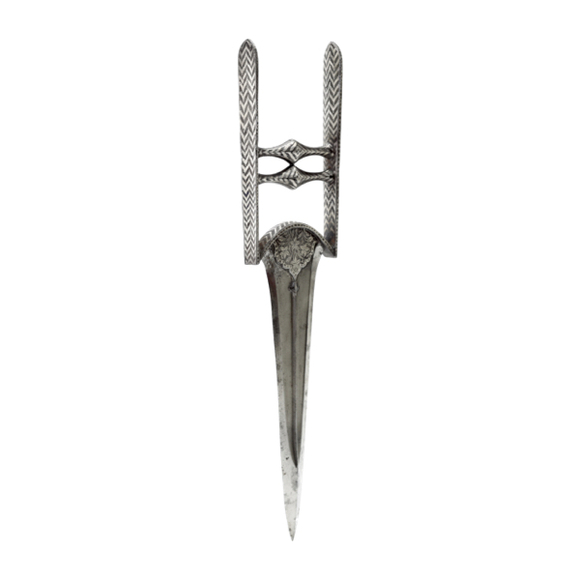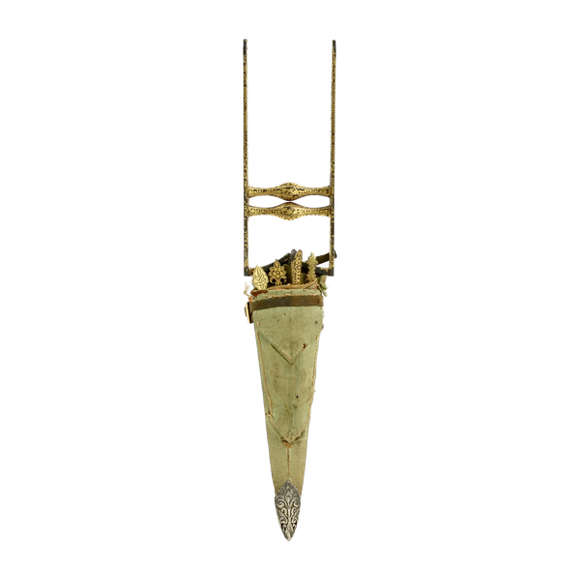These handsome daggers were worn by the nomadic Hadendoa people, their name has been interpreted as meaning…

Sheathed 47 cm
Dagger 40.4 cm
27.7 cm
T-spine
Base 11 mm
Middle 8 mm
3 cm from tip 6 mm
Edge side
Base 3 mm
Middle 2.5 mm
3 cm from tip 3 mm
Base 45 mm
Middle 23 mm
3 cm from tip 11 mm
328 grams
10 mm from hilt
Iron, steel, horn, brass.
Afghanistan / Pakistan
Late 19th - early 20th century
From the collection of Han Hendriks 1919-2008.
Description
An antique dagger, of a type that could be called pesh-kabz. Such daggers were worn among others by the Pashtun of the Khyber region.1
It has a long, slender blade with T-shaped spine reinforcement that provides great stiffness to an otherwise thin blade. A secondary bevel forms the still very sharp edge. It has a steel bolster and steel hilt, with on either side a slab of horn with a nice gradient from blond do darker brown near the pommel.
The top of the spine is chiseled to form a ridgeline and there is some engraved decoration in the Persian style. On top of the steel bolster is written "٢١", 21 in Arabic numerals.
The wooden scabbard is covered with brass plating, punched and chased with with traditional motifs. It has a characteristic upturned scabbard end.

Two Afghan tribesmen, Second Afghan War.
Photo by John Burke, circa 1879-1880.
Notice the upturned scabbard end.
Provenance
The piece comes from Han Hendriks (1919-2008), a notable Dutch blacksmith with a forge in the Balistraat, The Hague. He kept a study collection of antique ironwork from around the world, some of which I have been able to purchase from his descendants.
Notes
1. Egerton illustrates an example that comes from Bannu, in southern Khyber Pakhtunkhwa, Pakistan. See: Lord Egerton of Tatton: Indian and Oriental Arms and Armour. Dover Publications; Revised edition, 2002. Page 130, number 624 & plate XIV.



















Of a style often associated with Tanjore, the seat of the Vijayanagara empire.

